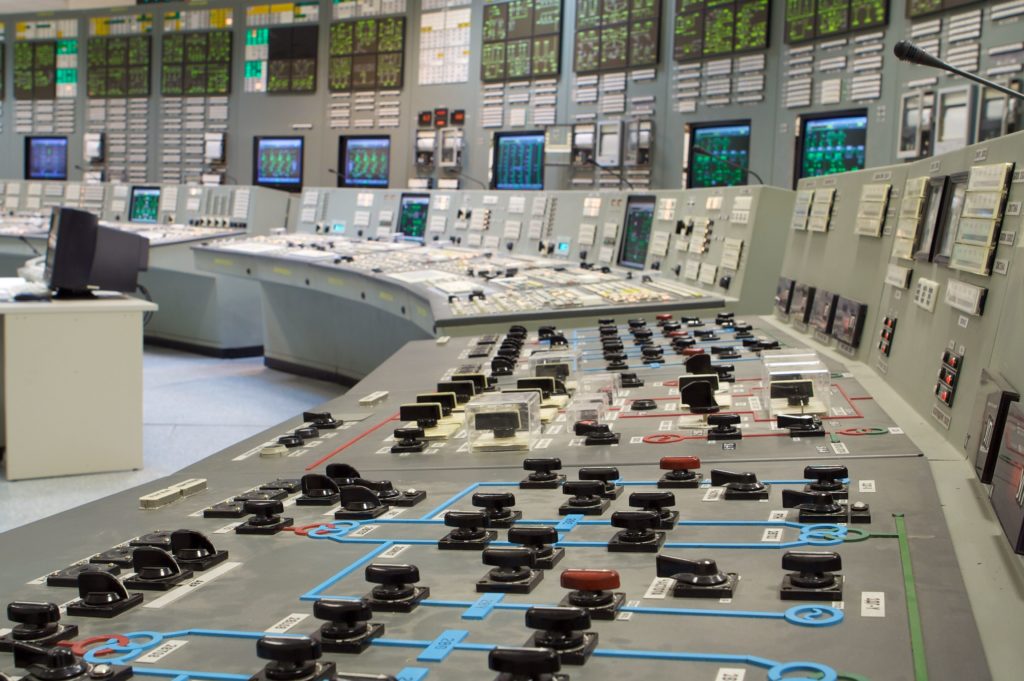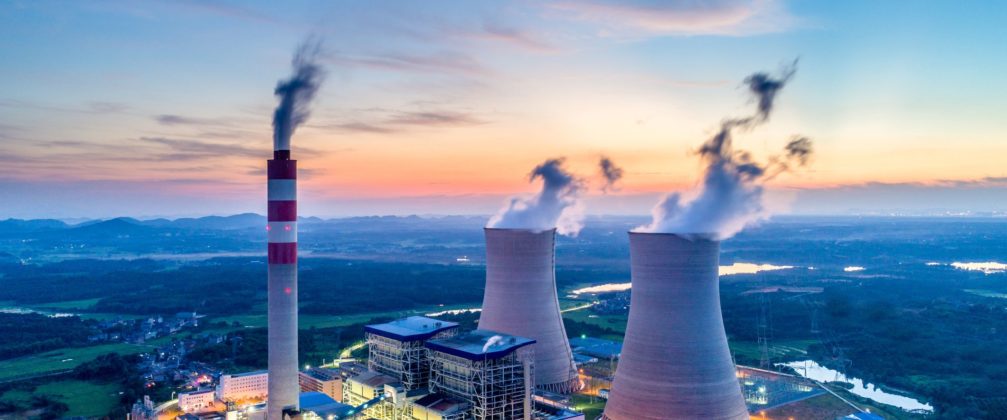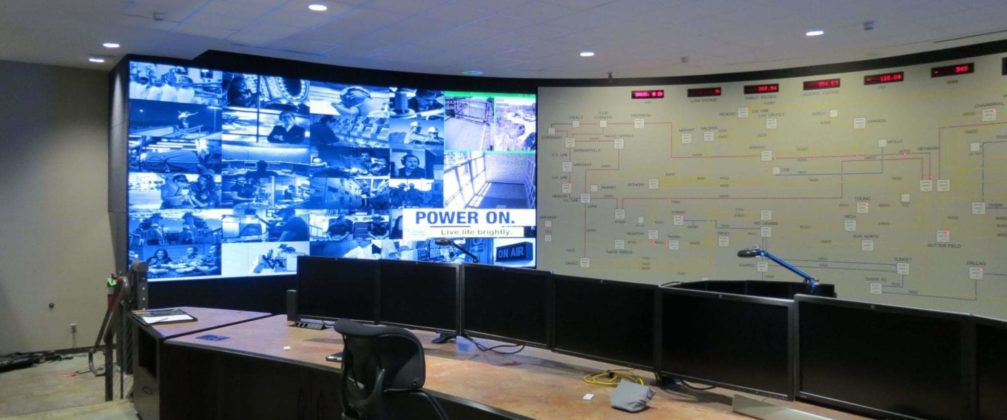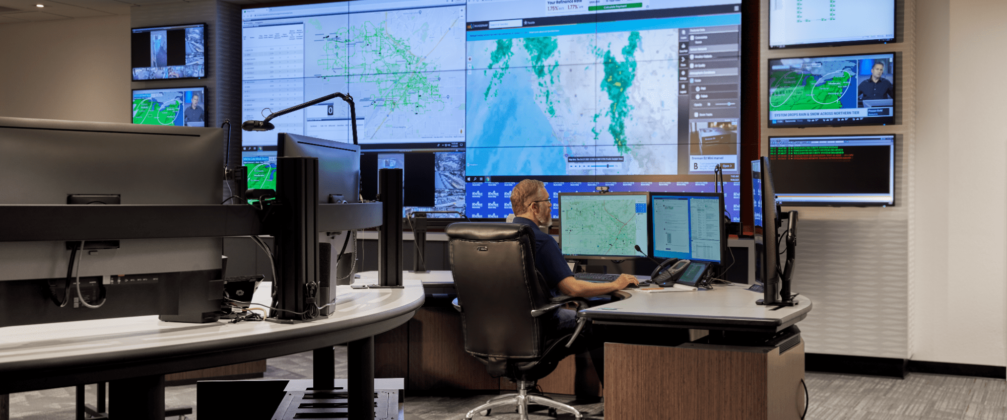Utility control center operators make consequential decisions every day that require them to have superior situational awareness. They’re continuously monitoring and controlling dynamic changes to ensure the optimum production of energy and distribution to consumers. To succeed in their role, utility operators need control rooms that help them make the right decision in crucial situations. Let’s take a closer look at the importance of well-designed, strategic control rooms for utilities.
Command Center Video Walls Provide Big Data Visualization for Operators
One of the most important aspects of any utility control room is video walls for big data visualization. Video walls facilitate accurate monitoring for improved collaboration and a more timely response in mission-critical situations. That means they’re a must-have for any facility that oversees utility generation, transmission, and distribution.
Facilities may use their video walls to display their entire transmission and distribution grid around the clock. This helps minimize costly disruptions to production and service that can negatively impact their customers. Video walls also allow operators to view meter information to determine the status of individual customers.
Utility control room operators also use video walls to display their communications with field operators. These communications can be displayed alongside data from outage management systems and distribution management systems. Operators can seamlessly switch between schematic or geographic network representations, helping them effectively direct crews as they install new systems, take readings, or make repairs to existing networks.
Video Walls and Supervisory Control and Data Acquisition (SCADA)
Many utilities use SCADA to gather and analyze data in real-time. Their observations and conclusions are then used to monitor and control their facility. These include energy companies, water or wastewater facilities, and facilities that refine or transport oil and gas. Displaying SCADA information on large video walls enhances readability and quality, making it easier for operators to analyze data.
Here’s an example of how a power plant control room might integrate SCADA into their video walls. When SCADA determines an outage has occurred, it transmits outage data back to the control room and displays it on video walls. This alerts operators of the outage so they can begin the process of restoring power. SCADA also prioritizes the importance of the outage and displays information in real-time as the operators work.
Control Rooms Provide Utilities with Security and Surveillance
When it comes to utilities, security and surveillance are of the utmost importance. Facilities must be able to operate securely at all times in order to provide continuous services to customers. A control room and the functionalities it offers is the perfect setting for a surveillance office or situation room. Operators can monitor and control the entire security system from one location, decreasing the chance of vulnerabilities.

Control Rooms Support Regulator and Customer Transparency
Transparency is extremely important for utility companies since they must be compliant with performance metrics imposed by regulators. Utilities must accurately and transparently report their operations, and if they don’t, they can be assessed penalties.
Utilities are also beholden to customers and are expected to provide them with uninterrupted services. For example, if a customer loses power, they expect to quickly receive information about the outage and when their power will be restored. If utilities don’t clearly convey the information customers need (including timeframes), customers may file complaints.
Control rooms give utility companies the space and ability to manage information in real-time, which enables them to be transparent with regulators and customers. In turn, this helps utilities manage both perceptions and expectations regarding their service and performance.
Control Rooms Can House Training Simulation Panels
As older operators retire, utilities need effective ways to train their replacements. One of the best ways to do this is with hard or soft simulation panels. These are especially important in the nuclear industry, as only one new nuclear facility has been commissioned since 1996. Control room fabricators — like Mauell — can retrofit simulation panels that replicate the look and feel of any control panel a nuclear power plant control room needs.


